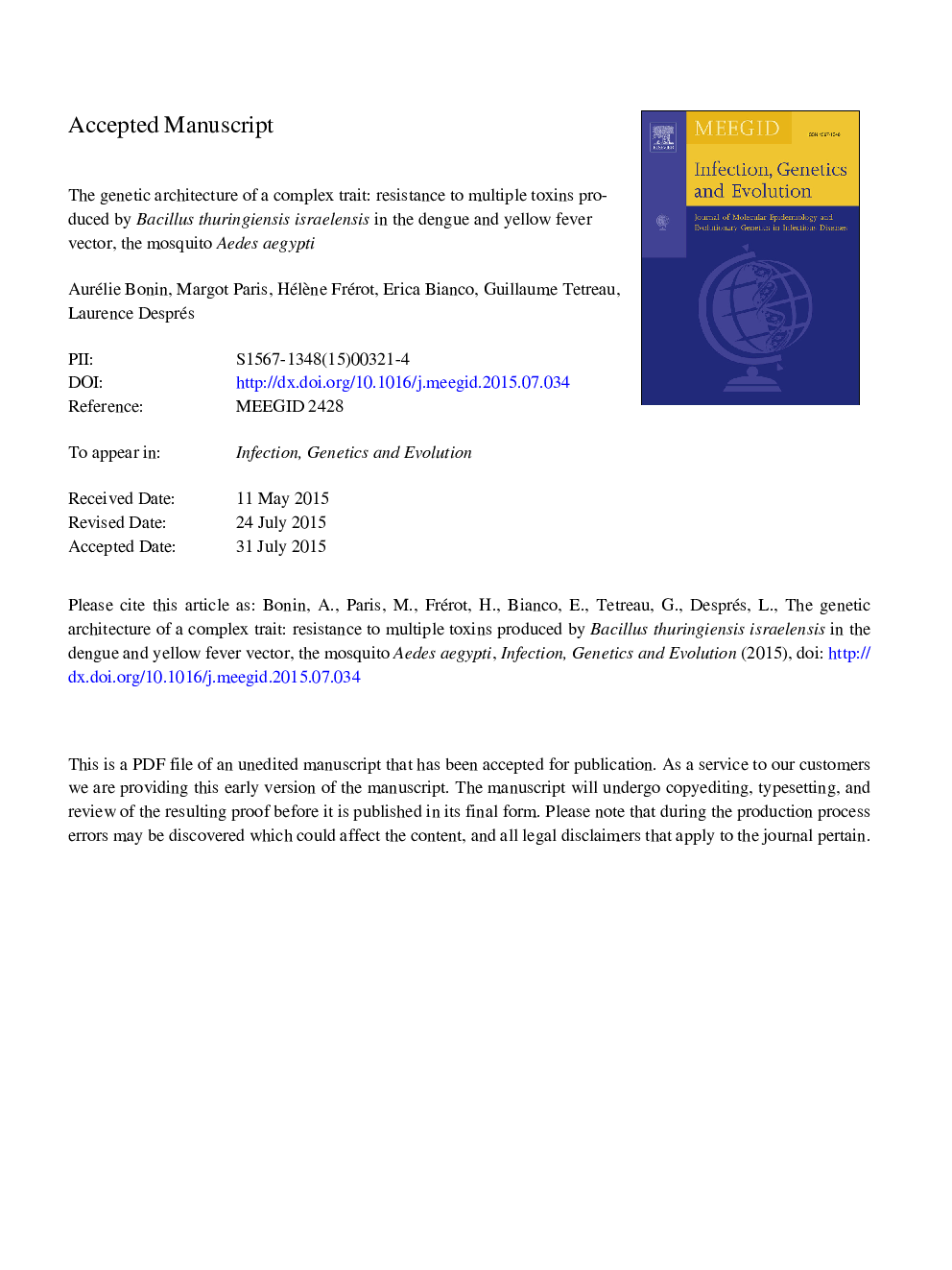| کد مقاله | کد نشریه | سال انتشار | مقاله انگلیسی | نسخه تمام متن |
|---|---|---|---|---|
| 5908452 | 1570168 | 2015 | 38 صفحه PDF | دانلود رایگان |
عنوان انگلیسی مقاله ISI
The genetic architecture of a complex trait: Resistance to multiple toxins produced by Bacillus thuringiensis israelensis in the dengue and yellow fever vector, the mosquito Aedes aegypti
دانلود مقاله + سفارش ترجمه
دانلود مقاله ISI انگلیسی
رایگان برای ایرانیان
کلمات کلیدی
موضوعات مرتبط
علوم زیستی و بیوفناوری
علوم کشاورزی و بیولوژیک
بوم شناسی، تکامل، رفتار و سامانه شناسی
پیش نمایش صفحه اول مقاله

چکیده انگلیسی
The bacterial insecticide Bacillus thuringiensis subsp. israelensis (Bti) is an increasingly popular alternative to chemical insecticides for controlling mosquito populations. Because Bti toxicity relies on the action of four main toxins, resistance to Bti is very likely a complex phenotype involving several genes simultaneously. Dissecting the underlying genetic basis thus requires associating a quantitative measure of resistance to genetic variation at many loci in a segregating population. Here, we undertake this task using the dengue and yellow fever vector, the mosquito Aedes aegypti, as a study model. We conducted QTL (Quantitative Trait Locus) and admixture mapping analyses on two controlled crosses and on an artificial admixed population, respectively, all obtained from resistant and susceptible lab strains. We detected 16 QTL regions, among which four QTLs were revealed by different analysis methods. These four robust QTLs explained altogether 29.2% and 62.2% of the total phenotypic variance in the two QTL crosses, respectively. They also all showed a dominant mode of action. In addition, we found six loci showing statistical association with Bti resistance in the admixed population. Five of the supercontigs highlighted in this study contained candidate genes as suggested by their function, or by prior evidence from expression and/or outlier analyses. These genomic regions are thus good starting points for fine mapping of resistance to Bti or functional analyses aiming at identifying the underlying genes and mutations. Moreover, for the purpose of this work, we built the first Ae. aegypti genetic map based on markers associated with genes expressed in larvae. This genetic map harbors 229 SNP markers mapped across the three chromosomes for a total length of 311.9Â cM. It brought to light several assembly discrepancies with the reference genome, suggesting a high level of genome plasticity in Ae. aegypti.
ناشر
Database: Elsevier - ScienceDirect (ساینس دایرکت)
Journal: Infection, Genetics and Evolution - Volume 35, October 2015, Pages 204-213
Journal: Infection, Genetics and Evolution - Volume 35, October 2015, Pages 204-213
نویسندگان
Aurélie Bonin, Margot Paris, Hélène Frérot, Erica Bianco, Guillaume Tetreau, Laurence Després,